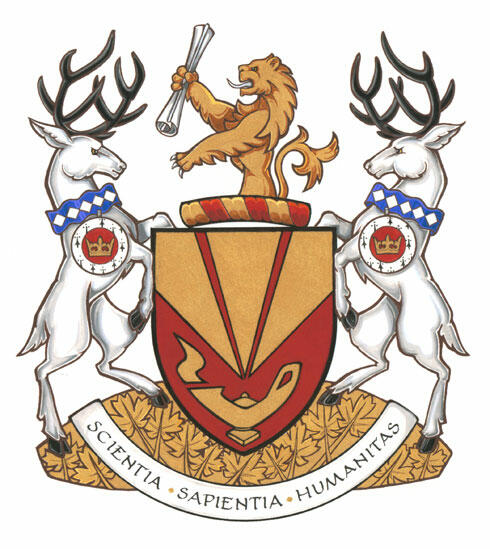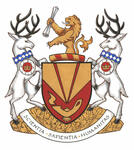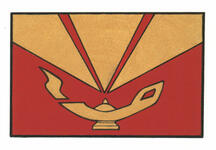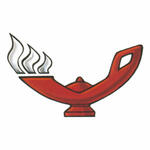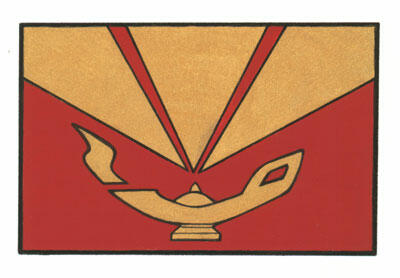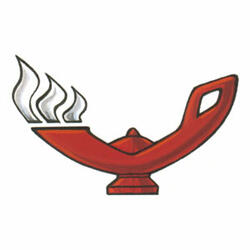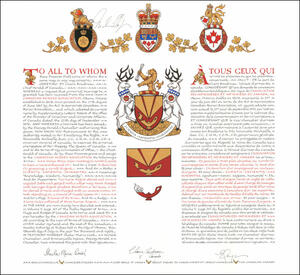The contents of this Register are intended for research purposes only. The heraldic emblems found in the Register may not be reproduced in any form or in any media without the written consent of the Canadian Heraldic Authority and/or the recipient.
Ottawa, Ontario
Grant of Arms, Supporters, Flag and Badge
July 15, 2008
Vol. V, p. 317
Arms of the Canadian Nurses AssociationBlazonGules three piles meeting in nombril point, in base a lamp enflamed Or; SymbolismThe three triangles symbolize the three founding communities of the First Nations/Inuit, Francophones and Anglophones, a diversity found within the Canadian Nurses Association (CNA). Since the mid-nineteenth century and the famous nursing service of Florence Nightingale in the Crimea, the lamp has been the most widely recognized symbol of nursing. Gold represents the generosity and duration of nursing; red represents the fortitude, strength, magnanimity and life of nursing. |
CrestBlazonA demi-lion Or grasping a scroll Argent; SymbolismThe lion emphasizes the role of the CNA as the defender of the interests of the profession and of the principles of the Canada Health Act. The scroll represents the Act itself and, more broadly, the advocacy role played by the Association on the national and international stages. |
MottoBlazonSCIENTIA • SAPIENTIA • HUMANITAS; SymbolismThis Latin motto means “Knowledge, wisdom, humanity” and reflects the ongoing values and virtues of the CNA and its members. |
SupportersBlazonTwo harts Argent attired and unguled Sable each gorged with a collar wavy Azure charged with lozenges Argent pendent therefrom a torteau bordered ermine and charged with an ancient crown Or, both standing on a mount of maple leaves Or; SymbolismThe white harts are a pun, referring to the white heart symbol adopted by the International Council of Nurses as an emblem of nursing. The creature is one of grace and swiftness, characteristics of the work of nurses in their role. The harts are positioned on either side of the shield to reflect the support of nurses for the Canadian Nurses Association. The black antlers are a reference to the bands on nurses’ caps. On the collars the diamonds symbolize the five domains of nursing practice, research, administration, education and policy, with the wavy band being a subtle reference to the sashes worn by First Nations people. The medallion is a special creation, new to Canadian heraldry, to refer to incorporated bodies whose Patron is Her Majesty The Queen. The compartment of maple leaves symbolizes the communities served by nurses across Canada. The maple leaves represent new life, new beginnings and new knowledge for both patients and nurses. Thirteen leaves are shown to represent the provinces and territories or jurisdictions of the CNA. |
Badge of the Canadian Nurses AssociationBlazonA lamp Gules enflamed of three flames Argent; SymbolismThe badge uses the national colours of red and white. The three flames indicate the tripartite character of nursing: the union of mind (knowledge), heart (compassion and caring) and hands (physical skill in work and touch). |
Additional InformationCreator(s)Original concept of Robert D. Watt, Rideau Herald Emeritus, and of Claire Boudreau, Chief Herald of Canada, assisted by the heralds of the Canadian Heraldic Authority. PainterDebra MacGarvie CalligrapherDoris Wionzek Recipient TypeCivil Institution
|

